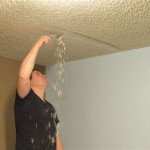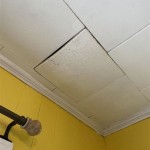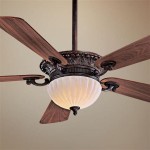How to Effectively Remove Mold from Your Bathroom Ceiling
Mold growth in a bathroom, particularly on the ceiling, is a common problem for homeowners. Bathrooms provide the ideal environment for mold, due to the high humidity and moisture levels created by showering, bathing, and inadequate ventilation. Mold is not only unsightly, leaving dark stains and a musty odor, but it can also pose health risks to occupants. Therefore, addressing mold growth promptly and effectively is crucial for maintaining a healthy and comfortable living environment. This article will outline the necessary steps for identifying, safely removing, and preventing mold from recurring on your bathroom ceiling.
Before beginning any mold remediation project, it is essential to understand the potential health hazards associated with mold exposure. Mold spores can trigger allergic reactions, respiratory problems, and other health issues, especially in individuals with pre-existing conditions such as asthma or allergies. Common symptoms of mold exposure include sneezing, coughing, runny nose, skin rashes, and eye irritation. People with compromised immune systems and young children are particularly vulnerable to the effects of mold.
Therefore, it is vital to take precautions to protect oneself during the cleaning process. This includes wearing appropriate personal protective equipment (PPE) such as a respirator or face mask to prevent inhaling mold spores, gloves to prevent skin contact, and eye protection to shield the eyes from splashes. Proper ventilation is also critical to minimize exposure to airborne spores. Opening windows and using an exhaust fan can help to circulate fresh air and reduce the concentration of mold spores in the air. If the mold infestation is extensive, it may be necessary to consult with a professional mold remediation company. These companies have specialized equipment and training to safely and effectively remove mold and address underlying moisture problems.
Identifying Mold and Assessing the Extent of the Problem
The first step in addressing mold on a bathroom ceiling is to accurately identify it and assess the severity of the infestation. Mold typically appears as dark spots or patches, ranging in color from black and green to brown and gray. It may also have a fuzzy or slimy texture. Common areas for mold growth include corners, along edges, and around fixtures where moisture tends to accumulate.
Distinguishing mold from mildew is also important. Mildew is a surface fungus that typically appears as a white or gray powdery substance. While mildew can be easily removed with common household cleaners, mold is more deeply rooted and requires more aggressive treatment. If there is any doubt as to whether it is mold or mildew, it is best to treat it as mold and take the necessary precautions.
To assess the extent of the problem, carefully inspect the entire bathroom ceiling, as well as surrounding walls and fixtures. Look for any signs of water damage, such as stains, discoloration, or peeling paint. These may indicate the presence of hidden mold growth behind the ceiling or walls. If there is extensive mold growth, or if there are concerns about hidden mold, it is advisable to consult with a professional mold inspector. A mold inspector can use specialized equipment to detect mold and assess the extent of the infestation.
Furthermore, attempting to locate the source of the moisture that is fostering the mold growth. This is a critical step because if the underlying moisture problem is not addressed, the mold will likely return, even after it has been cleaned. Common sources of moisture in bathrooms include leaking pipes, condensation from showers, and poor ventilation. Check around the shower, toilet, and sink for any signs of leaks. Ensure that the exhaust fan is working properly and that it is used during and after showering or bathing. If the source of the moisture is not readily apparent, it may be necessary to contact a plumber or other professional to investigate.
Cleaning Mold from a Bathroom Ceiling
Once the mold has been identified and the extent of the problem has been assessed, the next step is to clean the affected area. Several methods can be used to remove mold from a bathroom ceiling. The choice of method will depend on the severity of the infestation and the type of surface being cleaned.
A common and effective method for cleaning mold is to use a solution of bleach and water. Bleach is a powerful disinfectant that can kill mold spores and remove stains. However, it is important to use bleach safely and to follow the manufacturer's instructions. Mix one part bleach with ten parts water in a spray bottle. Spray the solution onto the affected area and let it sit for 10-15 minutes. Then, scrub the area with a scrub brush or sponge to remove the mold. Rinse the area thoroughly with clean water and dry it with a clean cloth.
It is important to note that bleach can damage some surfaces, so it is important to test the solution in an inconspicuous area before applying it to the entire ceiling. Also, bleach should never be mixed with ammonia, as this can create toxic fumes. Always wear gloves and eye protection when working with bleach.
Another option for cleaning mold is to use a commercial mold cleaner. These cleaners are specifically formulated to kill mold and remove stains. They are often less harsh than bleach and may be safer to use on delicate surfaces. Follow the manufacturer's instructions carefully when using a commercial mold cleaner. Ensure adequate ventilation and wear appropriate PPE, as with bleach.
For more natural alternatives, consider using vinegar or tea tree oil. White vinegar is a natural disinfectant that can kill mold spores. Spray undiluted white vinegar onto the affected area and let it sit for an hour. Then, wipe the area clean with a damp cloth. Tea tree oil is another natural antifungal agent. Mix a few drops of tea tree oil with water in a spray bottle. Spray the solution onto the affected area and let it sit for an hour. Then, wipe the area clean with a damp cloth. Note that tea tree oil has a strong odor, so it is important to ventilate the area well.
After cleaning the mold, it is important to thoroughly dry the affected area to prevent it from returning. Use a clean cloth or towel to dry the ceiling. You can also use a fan or dehumidifier to help dry the area more quickly. Ensure that the bathroom is well-ventilated to prevent moisture from accumulating.
Preventing Mold Recurrence
Preventing mold from recurring is as important as removing it in the first place. Addressing the underlying moisture problem is paramount. Fixing leaks, ensuring proper ventilation, and controlling humidity levels are essential steps in preventing mold growth.
Ensure that the exhaust fan in the bathroom is working properly and that it is used during and after showering or bathing. The exhaust fan should be powerful enough to remove moisture from the air quickly. Consider installing a timer on the exhaust fan so that it runs for at least 30 minutes after showering or bathing. Regularly clean the exhaust fan to ensure that it is functioning efficiently.
Improve ventilation by opening windows and doors when possible. This will help to circulate fresh air and reduce humidity levels. Consider installing a dehumidifier in the bathroom to remove excess moisture from the air. Dehumidifiers can be particularly helpful in bathrooms that are prone to high humidity levels.
Regularly clean the bathroom to prevent the buildup of mold and mildew. Use a bathroom cleaner that contains a disinfectant to kill mold spores. Pay particular attention to areas that are prone to moisture, such as the shower, toilet, and sink. Wipe down surfaces after showering or bathing to remove excess moisture. Regularly inspect the bathroom for any signs of leaks or water damage. Repair any leaks promptly to prevent mold growth.
Consider using mold-resistant paint on the bathroom ceiling. Mold-resistant paint contains additives that inhibit the growth of mold and mildew. This can be a helpful preventative measure, especially in bathrooms that are prone to mold growth. Prepare the surface properly before painting by cleaning and priming it. Follow the manufacturer's instructions carefully when applying the paint. Re-apply paint when necessary to maintain its protective properties.
By taking these steps, homeowners can effectively remove mold from their bathroom ceiling and prevent it from recurring. Regular maintenance, proper ventilation, and prompt attention to moisture problems are key to maintaining a healthy and mold-free bathroom environment. If the mold infestation is extensive or if there are concerns about hidden mold, it is always best to consult with a professional mold remediation company.

How To Permanently Remove Mold From Bathroom Ceiling With Vinegar

Mold On Bathroom Ceiling How To Remove From Ceilings

How To Remove Black Mold From A Bathroom Ceiling

How To Remove Mould From Ceilings Simply Spotless Cleaning

How To Clean Mold From Your Bathroom Ceilings Like A Pro Lovetoknow

Detecting And Preventing Mold Growth On Your Bathroom Ceiling Trusscore

6 Steps To Get Rid Of Mold On The Bathroom Ceiling Redfish Inspections

Mold On Bathroom Ceiling How To Remove From Ceilings

How To Clean Mold Off Your Bathroom Ceiling Top 5 Tips For 2024

Don T Let Mould Take Over How To Remove It From Your Ceiling








